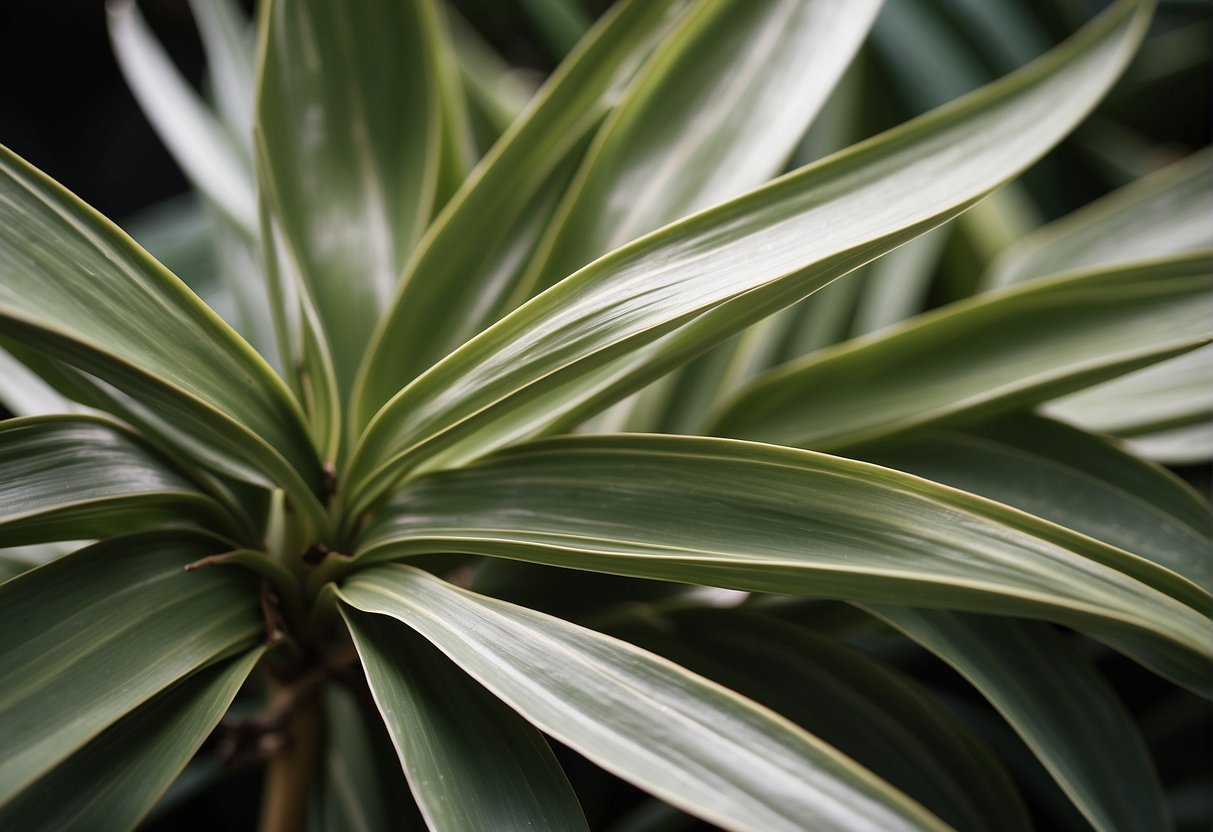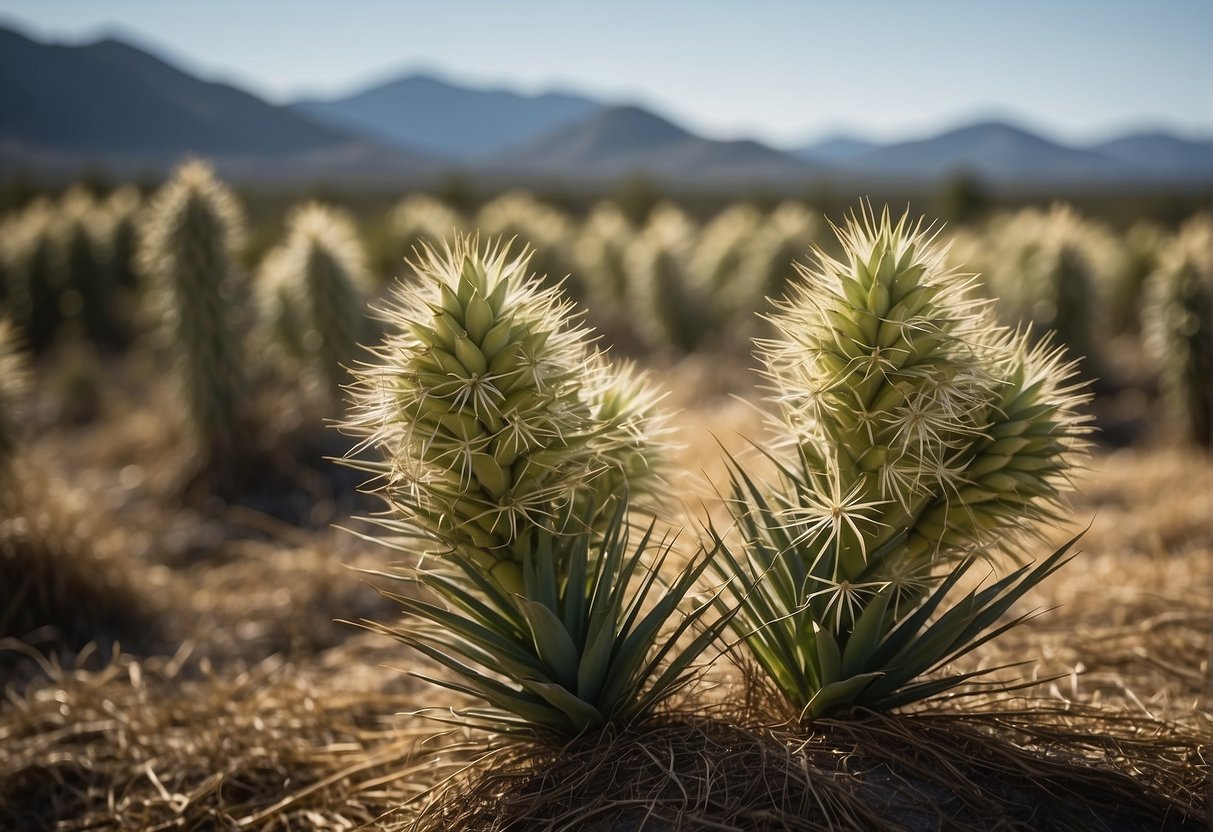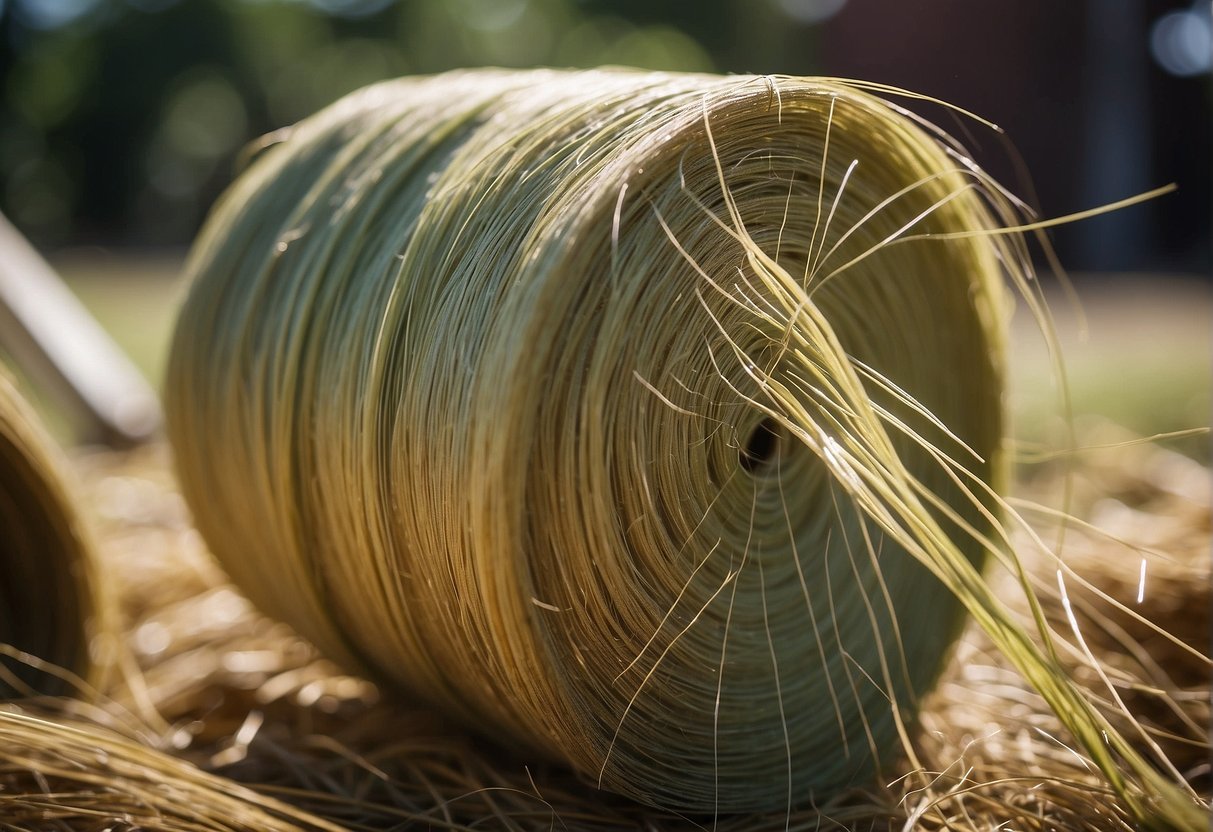How to Make Lashing from Yucca Plants: A Step-by-Step Guide
For those in search of a natural and eco-friendly option for lashing materials, the yucca plant is an excellent choice. Originating from the Americas, yuccas feature blade-shaped leaves and towering, spiky blossoms. But beyond their striking appearance, it’s less commonly known that these plants yield robust and long-lasting fibers, making them perfect for a range of uses, lashing included.

Identifying suitable yucca species for lashing is the first step in the process. While there are over 40 species of yucca, not all of them produce fibers suitable for lashing. The most common species used for lashing are Yucca baccata, Yucca elata, and Yucca schidigera, which are found in the southwestern United States and northern Mexico. These species produce long, straight fibers that are easy to harvest and prepare.
Harvesting yucca fibers involves removing the leaves from the plant and extracting the fibers from the leaf bases. The fibers are then washed and dried before being twisted or braided into lashing. Proper preparation of the fibers is crucial for creating strong and durable lashing that can withstand the elements. With a little practice, you can create beautiful and functional yucca lashing for a variety of applications.
Key Takeaways
- Yucca plants produce strong and durable fibers that can be used for lashing.
- Yucca baccata, Yucca elata, and Yucca schidigera are the most common species used for lashing.
- Proper preparation of the fibers is crucial for creating strong and durable yucca lashing.
Identifying Suitable Yucca Species for Lashing

If you’re looking to make lashing from yucca plants, it’s important to choose the right species. Not all yuccas are suitable for lashing, and choosing the wrong one can result in weak or brittle lashing that won’t hold up over time. In this section, we’ll cover the physical characteristics of yucca plants and how to select the best species for lashing.
Physical Characteristics of Yucca Plants
Yucca plants are characterized by their long, thin foliage and woody stems. They are native to arid regions of North and Central America, and are often found in desert and semi-desert environments. Yucca plants can range in size from small shrubs to large trees, and their foliage can be green, gray, or blue-green in color.
One of the most important physical characteristics of yucca plants for lashing is the thickness of their foliage. Yuccas with thin, flexible leaves are ideal for making lashing, as they can be easily stripped and twisted into cordage. Yuccas with thicker, stiffer foliage may be more difficult to work with and produce weaker lashing.
Selecting Yucca Plants for Lashing
Two species of yucca that are particularly well-suited for lashing are Yucca elephantipes and Yucca filamentosa. Yucca elephantipes, also known as the elephantipes or spineless yucca, is a large tree-like yucca with thin, flexible foliage. Yucca filamentosa, also known as the filamentosa or Spanish bayonet, is a smaller yucca with long, thin leaves that are ideal for lashing.
When selecting yucca plants for lashing, look for plants with long, straight stems and thin, flexible foliage. Avoid plants with thick or brittle stems, as these may produce weaker lashing. If you’re not sure which species of yucca to choose, consult a field guide or ask a local expert for advice.
In summary, selecting the right species of yucca is crucial for making strong and durable lashing. Look for yuccas with thin, flexible foliage and long, straight stems, and avoid plants with thick or brittle stems. With the right species and a little practice, you can create high-quality lashing from yucca plants that will last for years to come.
Harvesting Yucca Fibers

Yucca plants are a great source of natural fibers that can be used for lashing and cordage. However, before you can extract these fibers, you need to harvest the yucca leaves. Here are the steps to follow:
Cutting and Collecting Yucca Leaves
The best time to harvest yucca leaves is in the spring when the leaves are young and tender. Mature leaves tend to be tough and fibrous, making them difficult to work with.
To harvest the leaves, you will need a sharp knife or pair of garden shears. Start by identifying the leaves that are ready for harvest. Look for green leaves that are at least 2 feet long and have a diameter of at least 1 inch.
Once you have identified the leaves, use your knife or shears to cut them off at the base, as close to the trunk of the plant as possible. Be careful not to damage the plant or any of the surrounding foliage.
Once you have collected all the leaves you need, it’s time to extract the fibers.
Extracting Fibers from Yucca Leaves
To extract the fibers from the yucca leaves, you will need to remove the outer layer of the leaf. This can be done by gently scraping the leaf with a sharp knife or by using a dull butter knife to peel away the outer layer.
Once you have removed the outer layer, you will be left with a bundle of fibers that are ready to be processed. You can use these fibers to make cordage or lashing by twisting or braiding them together.
It’s important to note that yucca plants require regular maintenance and pruning to ensure healthy growth. Always be mindful of the plant’s needs when harvesting leaves and avoid damaging the plant or its surrounding foliage.
Preparing Yucca Fibers for Lashing
When it comes to making lashing from yucca plants, the first step is to prepare the fibers. Here are the steps to follow to prepare yucca fibers for lashing:
Drying Yucca Fibers
The first step in preparing yucca fibers is to dry them. Yucca fibers can be dried in the sun or in a dry, well-ventilated area. If you choose to dry them in the sun, make sure they are not exposed to direct sunlight for extended periods as it can damage the fibers. It is best to dry them in full sun for a few hours and then move them to a shady area to finish drying.
Twisting and Braiding Yucca Fibers
Once the yucca fibers are dry, you can start twisting and braiding them to make the lashing. To do this, you will need to separate the fibers into thin, flexible strips. You can use your hands to do this or a sharp knife.
To twist the fibers, take two or more strips and twist them together tightly. You can also braid the fibers by taking three or more strips and crossing them over each other in a pattern.
It is important to note that the fibers must be twisted or braided tightly to ensure the lashing is strong and durable. You can also wet the fibers slightly before twisting or braiding them to make them more pliable.
By following these steps, you can prepare yucca fibers for lashing and create strong and durable lashing for your projects.
Using Yucca Lashing for Various Applications
Yucca lashing is a versatile material that can be used for a variety of applications. Here are some ways you can use yucca lashing in your crafting projects:
Crafting with Yucca Lashing
Yucca lashing can be used to create a wide range of items, including baskets, mats, and even clothing. Its natural texture and strength make it an excellent choice for weaving and tying. To create a basket or mat, start by gathering a bunch of yucca leaves and stripping them of their fibers. Then, twist the fibers together to create a strong, durable cord. Use this cord to weave your basket or mat, tying it off at the end to secure it in place.
Maintenance and Care for Yucca Lashing
To ensure that your yucca lashing stays strong and durable, it’s important to take proper care of it. This means keeping it clean and dry, and avoiding exposing it to harsh chemicals or extreme temperatures. If your yucca lashing starts to fray or weaken over time, you can reinforce it by adding additional strands or tying knots to create a thicker, stronger cord.
Yucca lashing is a great choice for anyone looking for a natural, sustainable material that is both strong and beautiful. Whether you’re crafting baskets, mats, or other items, yucca lashing is sure to add a touch of rustic charm to your projects.
Frequently Asked Questions
What is the process for extracting fibers from yucca leaves to create lashing?
To extract fibers from yucca leaves, you need to first cut off the leaves from the plant and remove the outer skin from the leaves. Then, you need to pound the leaves with a rock or a wooden stick to break down the fibers. Once the fibers are exposed, you can separate them from the rest of the leaf material and twist them together to create a strong cordage.
Can you create lashing with materials other than yucca in Stranded Deep?
Yes, you can create lashing with other materials like palm fronds or even animal sinew. However, yucca plants are a reliable source of fiber and are easily accessible in the game, making them a popular choice for creating lashing.
What are the steps to turning yucca leaves into strong cordage?
The steps to turning yucca leaves into strong cordage include cutting off the leaves, removing the outer skin, pounding the leaves to expose the fibers, separating the fibers, and twisting them together to create a strong cordage. The process may take some time and practice to perfect, but with persistence, you can create reliable lashing from yucca plants.
How can you find yucca plants in a survival game like Stranded Deep?
Yucca plants can be found on sandy beaches and in rocky areas in Stranded Deep. They are easily recognizable by their long, sword-shaped leaves and tall, spiky flowers. Keep an eye out for these plants as they are a valuable source of fiber for creating lashing.
Is it possible to substitute palm fronds for yucca leaves when making lashing?
Yes, it is possible to substitute palm fronds for yucca leaves when making lashing. Palm fronds are also a good source of fiber and can be found in abundance on many of the islands in Stranded Deep. However, yucca leaves are generally considered to be a more reliable source of fiber for creating strong cordage.
What are the uses of lashing crafted from yucca plants in survival situations?
Lashing crafted from yucca plants can be used for a variety of purposes in survival situations. It can be used to tie together shelter materials, create fishing nets, repair tools and weapons, and even make clothing. Having a reliable source of lashing can greatly increase your chances of survival in the game.


